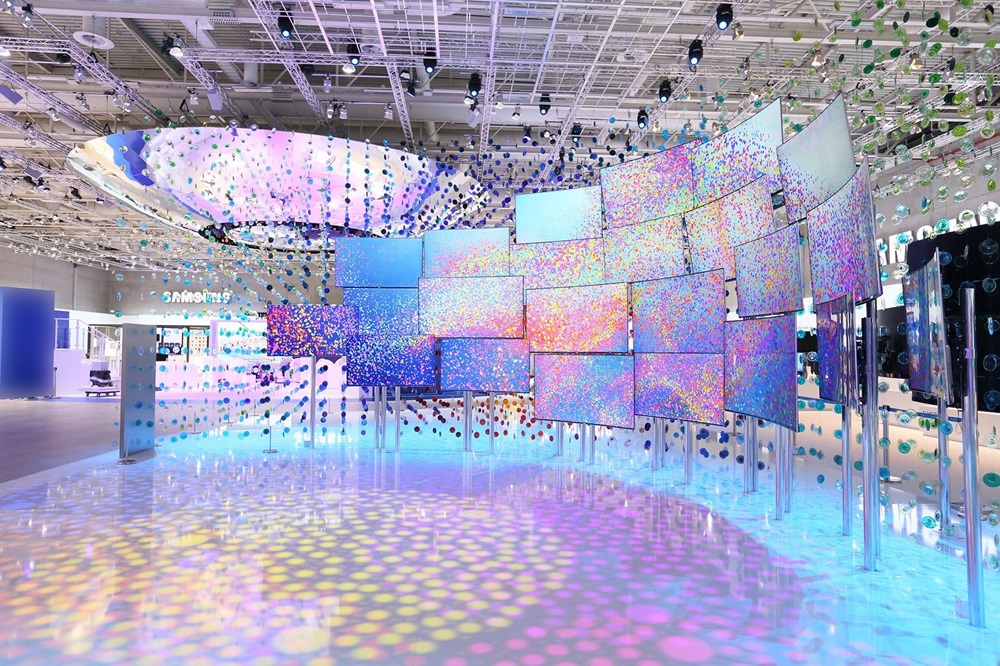As LED technology has advanced significantly over the years, selecting the right display solution has become increasingly intricate.
Benefits of LED Displays
While LCDs and projectors have been staples for a long time, LED displays are gaining popularity due to their distinct advantages, particularly in specific applications. Although the initial investment in LED displays may be higher, they prove to be cost-effective over time in terms of longevity and energy savings. Here are some key advantages to consider when selecting an LED video wall:
-
High Brightness:
One of the standout features of LED displays is their brightness, which can be five times greater than that of LCD panels. This high brightness and contrast allow for effective use in brightly lit environments without sacrificing clarity. -
Vivid Color Saturation:
LEDs provide a wide color spectrum, resulting in more vibrant and saturated colors that enhance the visual experience. -
Versatility:
Technology providers can create LED video walls in various shapes and sizes, offering flexibility to fit different spaces. -
Increased Density:
Tri-color surface-mounted LED technology allows for smaller, higher-density displays with superior resolution. -
Seamless Integration:
LED video walls can be installed without visible seams, creating a unified display that eliminates distractions from panel borders. -
Durability and Longevity:
Featuring solid-state technology, LED video walls boast an impressive lifespan of approximately 100,000 hours.
Key Factors to Consider When Choosing an LED Video Wall
With numerous options available in the market, it’s important to know what to prioritize. Considerations should include the size of the space, intended application, viewing distance, whether it’s for indoor or outdoor use, and the level of ambient light. Once these factors are established, here are additional aspects to think about:
-
Pixel Pitch:
Pixel density affects resolution, and it should be chosen based on how far viewers will be from the display. A smaller pixel pitch is ideal for close viewing, while a larger pitch works better for distant observation. -
Durability:
Seek a video wall that is built for long-term use and can be upgraded over time. Since LED video walls are a significant investment, consider whether the modules have protective encapsulation, particularly in high-traffic areas. -
Mechanical Design:
Modular video walls are constructed from tiles or blocks and can include smaller components to allow for creative designs, including curves and angles. -
Temperature Management:
LED displays can generate substantial heat, which may lead to thermal expansion. Additionally, consider how external temperatures may impact the video wall. A reliable technology partner can help you navigate these challenges to ensure your video wall remains aesthetically pleasing for years. -
Energy Efficiency:
Assess the energy consumption of any potential LED video wall. Some displays may run for extended hours or even continuously throughout the day. -
Compliance:
If you plan to install a video wall in a specific industry or for government use, you may need to adhere to certain specifications and regulations, such as TAA (Trade Agreements Act) compliance, which dictates where products must be manufactured. -
Installation and Support:
Inquire about the types of installation services and ongoing support your technology partner offers for the video wall.
LED technology is continuously evolving. For instance, Christie Digital is at the forefront of innovation with solutions like MicroTiles LED, designed as a platform that can adapt as technology progresses. Upcoming trends include microLED chip-on-board (COB) displays and interactive encapsulated MicroTiles.
If you’re seeking to install a durable and reliable video wall, Hot Electronics is here to assist you. For more information, feel free to reach out to Hot Electronics today.
Post time: Oct-15-2024

